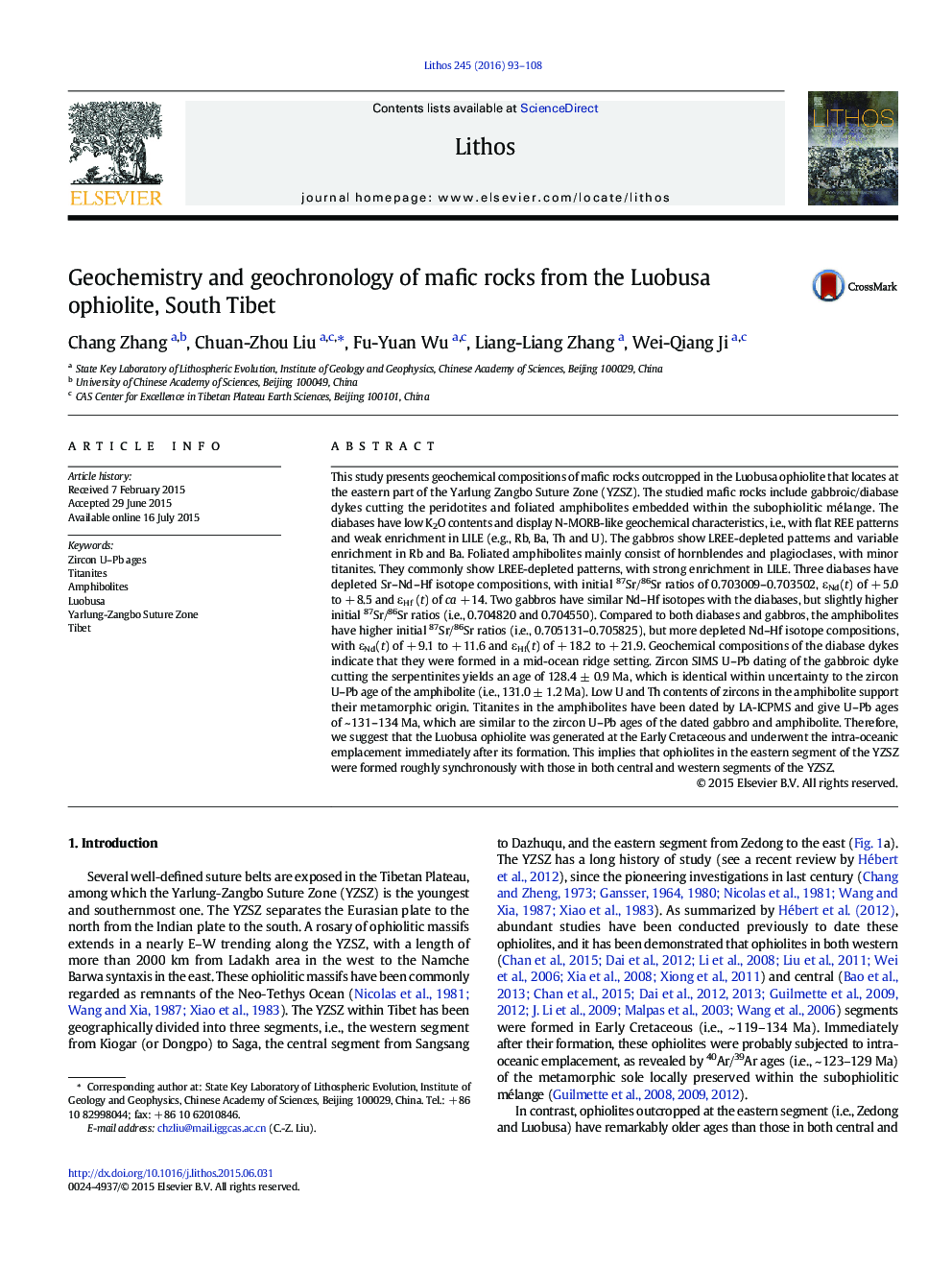| کد مقاله | کد نشریه | سال انتشار | مقاله انگلیسی | نسخه تمام متن |
|---|---|---|---|---|
| 4715528 | 1638651 | 2016 | 16 صفحه PDF | دانلود رایگان |
• Geochemical compositions of mafic rocks outcropped in the Luobusa ophiolite are studied.
• Both gabbros and amphibolites of the Luobusa ophiolite are dated.
• The Luobusa ophiolite was formed at the Early Cretaceous, i.e., ~ 130 Ma.
• The formation age is roughly synchronous to its metamorphic sole.
• Ophiolites along the whole YZSZ were coevally formed during the Cretaceous.
This study presents geochemical compositions of mafic rocks outcropped in the Luobusa ophiolite that locates at the eastern part of the Yarlung Zangbo Suture Zone (YZSZ). The studied mafic rocks include gabbroic/diabase dykes cutting the peridotites and foliated amphibolites embedded within the subophiolitic mélange. The diabases have low K2O contents and display N-MORB-like geochemical characteristics, i.e., with flat REE patterns and weak enrichment in LILE (e.g., Rb, Ba, Th and U). The gabbros show LREE-depleted patterns and variable enrichment in Rb and Ba. Foliated amphibolites mainly consist of hornblendes and plagioclases, with minor titanites. They commonly show LREE-depleted patterns, with strong enrichment in LILE. Three diabases have depleted Sr–Nd–Hf isotope compositions, with initial 87Sr/86Sr ratios of 0.703009–0.703502, εNd(t) of + 5.0 to + 8.5 and εHf (t) of ca + 14. Two gabbros have similar Nd–Hf isotopes with the diabases, but slightly higher initial 87Sr/86Sr ratios (i.e., 0.704820 and 0.704550). Compared to both diabases and gabbros, the amphibolites have higher initial 87Sr/86Sr ratios (i.e., 0.705131–0.705825), but more depleted Nd–Hf isotope compositions, with εNd(t) of + 9.1 to + 11.6 and εHf(t) of + 18.2 to + 21.9. Geochemical compositions of the diabase dykes indicate that they were formed in a mid-ocean ridge setting. Zircon SIMS U–Pb dating of the gabbroic dyke cutting the serpentinites yields an age of 128.4 ± 0.9 Ma, which is identical within uncertainty to the zircon U–Pb age of the amphibolite (i.e., 131.0 ± 1.2 Ma). Low U and Th contents of zircons in the amphibolite support their metamorphic origin. Titanites in the amphibolites have been dated by LA-ICPMS and give U–Pb ages of ~ 131–134 Ma, which are similar to the zircon U–Pb ages of the dated gabbro and amphibolite. Therefore, we suggest that the Luobusa ophiolite was generated at the Early Cretaceous and underwent the intra-oceanic emplacement immediately after its formation. This implies that ophiolites in the eastern segment of the YZSZ were formed roughly synchronously with those in both central and western segments of the YZSZ.
Journal: Lithos - Volume 245, 15 February 2016, Pages 93–108
